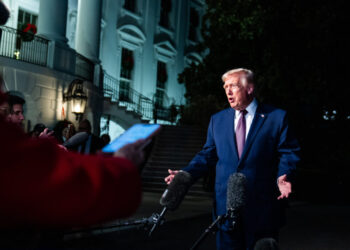Meet Dina Broadhurst, the Australian socialite who partied with naked rocker Yungblud on yacht
When touring British rocker Yungblud stripped totally naked on board a luxury yacht in Sydney Harbor, he was in good...
Trump’s Venezuela plan lures investors with oil, minerals — and risk
Politically connected U.S. business interests are searching for the fastest route to Caracas to start vetting investment opportunities in oil-...
The new vs. used car debate is dead. They’re both expensive debt traps.
The affordability crisis in America is not a hoax. Just ask anyone in the market for a car. Whether it’s...
Trump’s 2026 affordability message competes with foreign policy push
In the closing weeks of 2025, President Donald Trump gave a prime-time speech on affordability and launched a swing-state rally...
California is adding a supplement to tortillas. RFK Jr. calls it ‘insanity.’
For years, California health officials have been frustrated by the disproportionately high rates of birth defects among Latino children. Tortillas,...
A majority in name only? House Republicans are barely hanging on.
On Thursday, neither party really had the majority in the House. Over the course of seven roll-call votes, the final...
Disinformation in Minneapolis Shooting Points at People Who Were Not Involved
Within hours of a federal officer shooting and killing a 37-year-old Minneapolis woman on Wednesday, some social media users identified...
Banks criticize Trump’s push for 10 percent credit card interest rate cap
President Donald Trump has called on credit card companies to cap interest rates at 10 percent for a year, effective...
San Francisco transformed into mock battlezone under Air Force’s ‘Exercise Sourdough’
For three days, liberal outpost San Francisco was transformed into a mock battleground. Members of the US Air Force were...
Smithsonian Removes Label Noting Trump Impeachments
The Smithsonian’s National Portrait Gallery removed wall text that referred to President Trump’s two impeachments — language that had upset...














